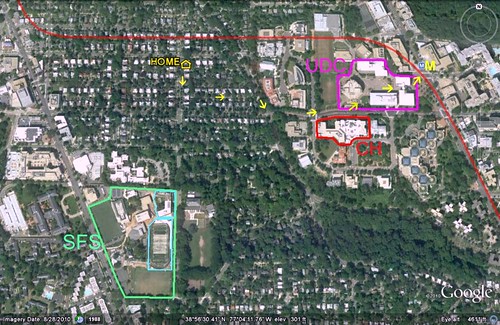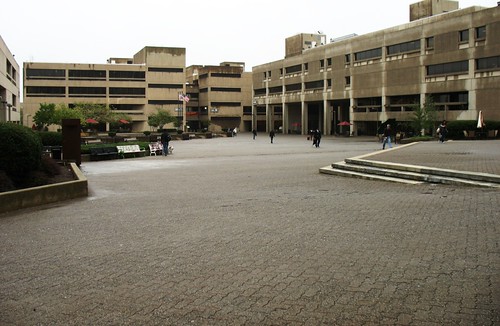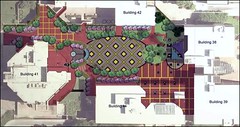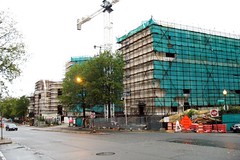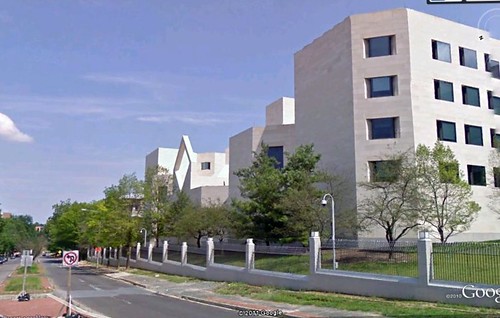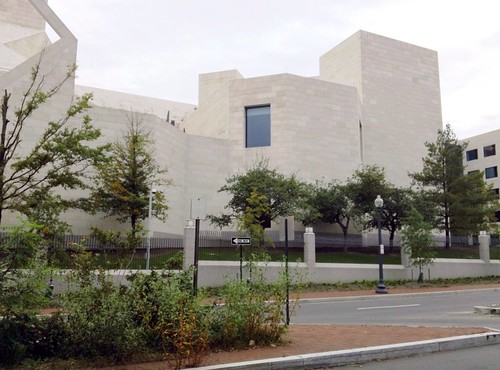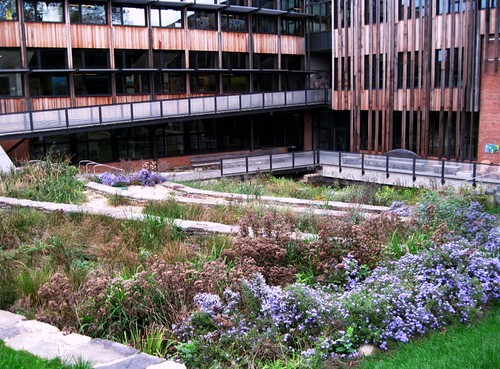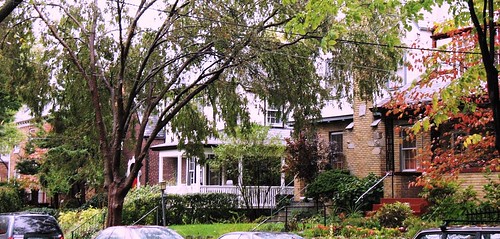Architecture matters, still

Posted October 25, 2011 at 1:33PM
Exactly four years ago today, I published my first blog post. Little did I know at the time how much I would enjoy this and how much maintaining a blog would change my life, probably doubling both my workload and my job satisfaction. The biggest downsides appear to be that I ride my bike a lot less and get to bed much later at night. I need to work on that, but there's no turning back.
The title of that post was “Architecture matters” and, although I didn’t have everything all mapped out, I think the seeds of my style of commentary were all there, in my initial outing: I was going to write from a first person, personal point of view; I was going to write about the quality of our built environment as if it matters every bit as much as do the traditional “environmental” concerns with pollution, nature and public health, because it does; I was going to tell my story with images as much as with words. I remember practically begging my professional friends to read that post, because otherwise no one might. I thought I was saying things that almost no one else in the mainstream environmental community was saying, and I was a bit insecure about it.
I had no idea whether my blog would find an audience, and didn’t yet know that I was going to commit to doing this almost every workday, because I wanted whoever was reading to be able to count on a continual flow. If I was loyal to my readers, I hoped, they would be loyal to me. I also had no idea how many wonderful new friends I would make through this medium and how much I would learn from them.
That first post displayed and described some of the built environment in my neighborhood, and how it affected me. In particular, I focused on the architecture of three major institutions within a ten-minute walk of my home, two of which I encounter on my way to the Metro station (see arrows in the image above). The three were the campus, and particularly the central plaza, of the University of the District of Columbia; the new (at the time) Chinese embassy; and the Sidwell Friends School.
Today’s post is, amazingly, number 937, and I am going to revisit the issues I started with.
In that first post, I lamented that the UDC campus consisted of “just the worst sort of mind-numbing, featureless,1970s big concrete boxes placed around a barren concrete ‘plaza’ with no grass, no shade trees, no color, and no outdoor public gathering places that anyone would actually like to gather in.” I expressed hope that perhaps some benefactor would donate enough money to allow the school at least to soften the plaza with grass, build a terrace café for students, and make some repairs.
Four years later, the good news is that a remake of the plaza is not only happening but proceeding in a way that is more ambitious than I had hoped for. Construction has been underway for a year.
When finished, the completely renovated campus hub will have varied design with red brick pavers to provide visual interest and contrast with the concrete, bunker-like buildings surrounding it; more grass and trees; permeable pavement to filter stormwater; and nice lighting and seating. There’s also a plan to improve another plaza on the side of the campus that borders Connecticut Avenue, near the Metro station. This is a major and much needed improvement that will benefit students, faculty, neighbors and the planet.
In that original post, I next lamented that the Chinese embassy then under construction – the largest ever built in Washington – was massive, presenting large blank walls to the street that, to me, were antithetical to a pleasant walking experience in the neighborhood. On reflection, I think I was suggesting that I might be able to handle either the scale of the facility or its unfriendliness to the street, but not both. I hoped that “over time, the starkness of the giant building will soften as landscaping matures and people come and go.”
Today, the building is no longer a construction project, and the landscaping between it and the street does help, as does some greenery planted in the median of Van Ness Street, which the building borders. Van Ness is not where the embassy's formal address or entrance is located; but it is nevertheless the street from which just about all of the public will encounter the massive facility. That is a big part of the problem.
I’m glad to have the vegetation, and glad to have a finished building rather than a construction project. But blank walls are still blank walls and, just as bad, there’s a concrete and iron security fence (with no gate) defending the building and grounds from anyone walking or driving by. I get it that embassies are not ordinary office buildings: but, because a large tract of land in the neighborhood was made available some decades ago for multiple embassy construction, we have lots of them nearby. This is the one that most confronts its neighbors with such imposing indifference.
Just as embassies are not ordinary office buildings, Sidwell Friends – which educated Chelsea Clinton and Al Gore III and is now educating Sasha and Malia Obama – is no ordinary school. Its resources are unlikely to match China’s, but I wouldn't be surprised if they match or even exceed UDC’s. Their campus comprises a mixture of old and new buildings and, just like every campus I have ever known, it is on a continual expansion and building spree. (Sometime I need someone to explain to me why this is so).
The very good news for the neighborhood, and for the environment, is that Sidwell is committed to building green. At the time of my post four years ago, the school had just opened its award-winning, LEED-platinum Middle School facility, which includes a constructed wetland that processes graywater, a green roof, solar panels, and architecture designed to evoke nature while managing light and energy. The rear of the building lines the street I live on, and I think it looks great.
Since the time of my first post, Sidwell has also added a new Athletic Center that has a football field for a roof and indoor facilities below, partially underground. Part of it lines our street as well (photo just above), its windows reflecting the trees along the street and in the park just across from the building. It’s big, to be sure, but not tall and not at all unpleasant in its interaction with the neighborhood. Kudos to the school for employing architecture and technology with grace.
The neighborhood’s primary assets, of course, remain the proximity of Metro, highly walkable streets with a range of nearby conveniences, a lot of trees and owner-tended landscaping and, to my possibly biased eyes, very pleasant and accessible residential architecture, made all the better by eighty years or so of maturity. It’s a great place to stroll, to live, and to return to.
I spend a fair amount of my professional time working at the neighborhood scale. Among other things, NRDC’s sustainable communities team promotes model solutions for where and how to build and improve great "people habitat" that also creates environmental benefits. I believe neighborhoods are especially important to this mission as the places where increments of development tend to occur, and where we encounter “the environment” on an everyday basis.
I’m not sure I thought about it that way four years ago when making my own neighborhood the very first subject of this blog, but it’s probably not an accident that I started with something personal and familiar. That’s where I’m most comfortable as a writer, applying what I’ve learned from the practice of law, policy and science to things that I relate to in personal experience.
Today’s anniversary post continues that theme, and it surely won’t be the last time that my neighborhood appears here. It’s called home for a reason.
Special thanks on this anniversary to Phil, Ian, Kim, Kathryn, and Will.
Move your cursor over the images for credit information.

